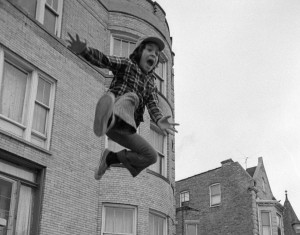 Derrick Strauss says that the real estate market is well on its way to a new norm, which trades reasonable interest rates for high closing cost. Today, Derrick Strauss answers questions about these fees and clues homebuyers in on the states with the lowest prepaid costs.
Derrick Strauss says that the real estate market is well on its way to a new norm, which trades reasonable interest rates for high closing cost. Today, Derrick Strauss answers questions about these fees and clues homebuyers in on the states with the lowest prepaid costs.
A Gathering of Experts: What are closing costs?
Derrick Strauss: Closing cost are essentially the monies it takes to cover the administrative costs of the loan. This can include title insurance, origination fees, and appraisal, credit checks and other incidentals like document processing and courier fees.
A Gathering of Experts: What is the national average for closing costs?
Derrick Strauss: Most people in the United States are going to see closing costs hovering right around $2,400.
A Gathering of Experts: How does that compare to previous years?
Derrick Strauss: In 2012, we saw closing costs closer to $2,260 for an average $200,000 mortgage. 2013’s rates are about 6 percent higher across the board.
A Gathering of Experts: Can you explain what origination fees are?
Derrick Strauss: Origination fees, also called underwriting charges, are what the bank actually charges for the loan. This is the money that actually goes to the bank.
A Gathering of Experts: And how much of the closing costs are these underwriting charges?
Derrick Strauss: It varies according to the lender. Some may charge a flat fee while others calculate underwriting charges as a percentage of the loan.
A Gathering of Experts: If you had to put a dollar amount on the average credit check and appraisal fees, what would it be?
Derrick Strauss: Most homebuyers are going to pay a little under $700 for these two items.
A Gathering of Experts: Have low interest rates contributed to the rise in closing costs?
Derrick Strauss: I think so, yes. As interest rates decrease the number of homebuyers increases, which means that lenders feel more comfortable charging more.
A Gathering of Experts: Are closing costs increasing on both home purchases and refinances?
Derrick Strauss: Yes, refinancing a home is actually a completely new home loan process and includes virtually identical closing costs.
A Gathering of Experts: Are there any differences?
Derrick Strauss: Some refinancers may not have to pay a title search if theirs is recent.
A Gathering of Experts: What states have the most expensive closing costs?
Derrick Strauss: Hawaii, which averages around $2,920. Alaska is second at around $2,675. South Carolina homebuyers can expect to pay almost $2,660 in closing costs.
A Gathering of Experts: Where’s the cheapest?
Derrick Strauss: Wisconsin, Missouri and Kansas average between $2,100 and $2,200.
A Gathering of Experts: Are closing costs negotiable?
Derrick Strauss: They can be, especially in competitive markets. It never hurts to ask.
A Gathering of Experts: But interest rates are not?
Derrick Strauss: No, but different loans will have different credit requirements for the best rate.
A Gathering of Experts: Is now a good time to buy a home?
Derrick Strauss: Absolutely. Rates are still comparatively low.
A Gathering of Experts: What advice would you give a new homebuyer before talking to the lender?
Derrick Strauss: I would suggest getting acquainted with the different types of available loans and what sort of financial commitment these require.
A Gathering of Experts: Like interest rates and closing costs?
Derrick Strauss: Yes, but also ask current homeowners in your area how much mortgage insurance and home insurance is. Many first-time homebuyers fail to plan for not only a down payment and closing costs but don’t calculate escrow fees.

 According to Investment Partnership co-founder Lindsay Rosenwald, medical experts continue to make strides toward eradicating cancer. Lindsay Rosenwald believes that the increase in cancer diagnoses has resulted in more research and development projects related to the disease. Recently, Lindsay Rosenwald discussed how technological advancements have assisted in the improvement of cancer survival rates.
According to Investment Partnership co-founder Lindsay Rosenwald, medical experts continue to make strides toward eradicating cancer. Lindsay Rosenwald believes that the increase in cancer diagnoses has resulted in more research and development projects related to the disease. Recently, Lindsay Rosenwald discussed how technological advancements have assisted in the improvement of cancer survival rates. Robert Rehak, founder of Rehak Creative Services, received an unexpected surprise recently when photos from the 1970s that he recently published online went viral. Before establishing Rehak Creative Services, Robert Rehak worked as a creative director at agencies in Chicago, Dallas and Houston. Below, he shares the unlikely story of how these compelling photos were “rediscovered.”
Robert Rehak, founder of Rehak Creative Services, received an unexpected surprise recently when photos from the 1970s that he recently published online went viral. Before establishing Rehak Creative Services, Robert Rehak worked as a creative director at agencies in Chicago, Dallas and Houston. Below, he shares the unlikely story of how these compelling photos were “rediscovered.” All State Van Lines Relocation is a moving brokerage firm based in Margate, Fla., that coordinates residential and corporate moves and relocations nationwide. In the following interview with A Gathering of Experts, All State Van Lines Relocation discusses moving trends around the U.S.
All State Van Lines Relocation is a moving brokerage firm based in Margate, Fla., that coordinates residential and corporate moves and relocations nationwide. In the following interview with A Gathering of Experts, All State Van Lines Relocation discusses moving trends around the U.S.